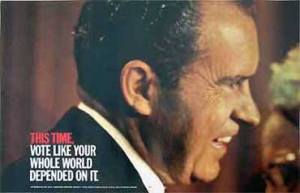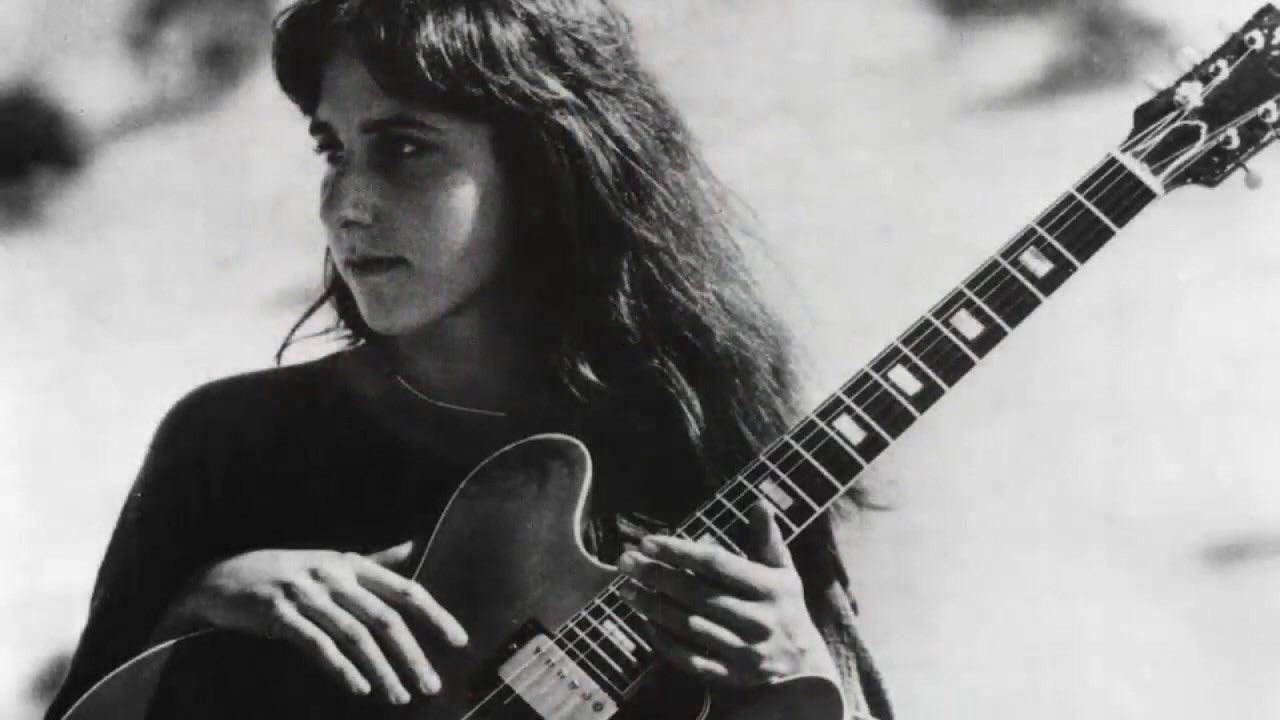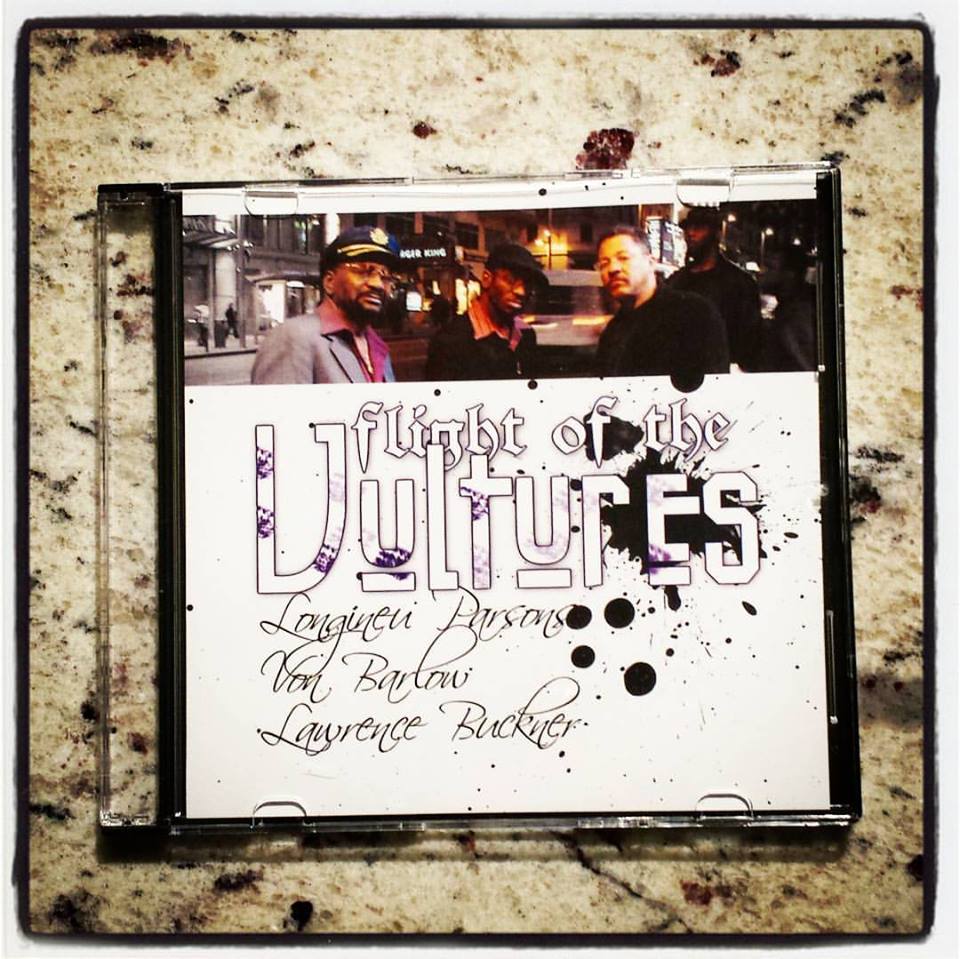The Greatest Comeback: How Richard Nixon Rose From Defeat to Create the New Majority, by Pat Buchanan. New York: Crown Forum/Random House. 392 pp, illustrated.
Nixon’s Secrets: The Rise, Fall and Untold Truth about the President, Watergate and the Pardon, by Roger Stone, with Mike Colapietro. New York; Skyhorse Publishing. 661 pp, illustrated.
Pat and Dick: The Nixons, an Intimate Portrait of a Marriage, by Will Swift. New York: Threshold Editions/Simon & Schuster. 447 pp, illustrated.

The year 2014 was an important one for the friends, family and fans of America’s infamous 37th president, who died 20 years ago this April. August 8th marked the 40-year anniversary of Nixon’s resignation, followed by his dramatic exit from office the following day. It was the beginning of a long journey back into America’s good graces, a process that continues to this day. This country and the entire world have changed a lot since his death, and time has rendered a different judgment of Nixon than the one rendered in his lifetime, as old information combines with new developments to clarify old perceptions.
These anniversaries have triggered a small flood of Nixonalia into the marketplace, and each project wrestles with a central problem: Richard Nixon is not a man who can be spoken of objectively. The nature of his work forces all those who study it to make their own decision at so many different points. Let’s keep it real: His enemies called him “Tricky Dick”, and even his allies would concede how utterly appropriate the nickname was—more so than maybe any president since Andrew Jackson, aka “Old Hickory”. HBO released “Nixon: In His Own Words”, an excellent 75-minute mashup of audio clips and video footage spanning the scope of his career. It’s an ideal introduction to one of the great character studies of the entire 20th century.
Richard Milhous Nixon cut one of the most unique swaths through our nation’s political history, and that influence persists today, a generation after he took leave of this dimension. As President Obama lurches toward the anticlimactic end of his administration, recent scandals have proven that, despite whatever early pretensions he may have had to the legacy of JFK, history will regard him as the closest thing we’ve had to Nixon since Nixon himself—a cold-blooded pragmatist, driven by inner tensions that he can hardly articulate.
Each of the three books tends to center on specific aspects of Nixon’s story, and will be of varying appeal, depending on the reader’s views of the subject. Two of the authors can be considered partisans: Buchanan and Stone were both recruited and trained in part by Nixon himself, and both went on to work for Reagan, as well.
But just as Nixon’s worst enemies would allow for the man’s obvious ability, his key supporters will readily own up to his major flaws—and, seen in its totality, the Nixon Legacy seems like something that could have never gone any differently than it did. Although Nixon himself would later own up to his many mistakes, it is unlikely that, given the opportunity, he would have never corrected them, because Richard Nixon was, by all accounts, pathologically incapable of admitting weakness. The whole debacle involving the infamous “Nixon Tapes” is a case in point. Even as his presidency was lurching, slowly and painfully toward its inevitable conclusion, he retained the power to save his presidency by simply burning the tapes.
Of course, veteran GOP operative Roger Stone, who started working for Nixon while barely out of his teens, posits that Nixon was set up for scandal by his own underlings, through a combination of incompetence and outright corruption, and that even he may not have known exactly what was up until the end. By the time his resignation was a fait accompli, the old man (who aged prematurely, like they all do) had already pivoted into plotting his post-presidency career. Stone argues that the affable ax-man Gerald Ford was selected to replace Spiro Agnew with a mind toward the pardon that he would eventually grant the fallen Nixon; he further argues that Nixon secured that pardon essentially through blackmail—specifically, his knowledge of Ford’s crucial role in whitewashing what became the Warren Commission Report. And that is the axis around which his narrative rotates.
Only in recent years has it become common knowledge that many of the people closest to the situation—Bobby Kennedy, Jackie Kennedy, Ted Kennedy, Lyndon Johnson, Richard Nixon, and even Fidel Castro—had all privately admitted extreme skepticism of the commission’s findings. Note that the latter three frequently turn up in conspiracy theories related to the real architects of the assassination; for what it’s worth, Stone fixes the blame squarely on LBJ, as he wrote in his previous book, and one may assume that his views were influenced heavily by Nixon’s own.
During his presidency, Nixon was known for making frequent references to “the Bay of Pigs situation”, particularly as the Watergate investigation began to pick up steam. Although he never spoke to the point directly, it was always widely believed that the phrase was a reference to the murder of JFK, but Stone makes this theory explicit: In his telling, Nixon as Vice-President was deputized by Eisenhower to plot the removal of Fidel Castro, in conjunction with the CIA and members of the mafia who’d been alienated by the Cuban regime. This effort, called “Operation 40”, led directly to the ridiculous failed assassination plots run by Bobby Kennedy under his brother, which then led directly to the disastrous Bay of Pigs invasion, which many (including Stone) led directly to the tragedy in Dallas in November 1963. (Add Stone’s name, also, to the list of writers who have alleged that other assassination plots had been in the works prior to November 1963.)
What made all this relevant to Nixon’s interests is that A) JFK was, at one point, a friend of his, and, having survived attempts on his own life over the years, he was deeply disturbed by the idea of any president being killed; and B) Nixon knew that several of the people thought to be involved in the murder plot—including people like Frank Sturgis, Felix Rodriguez, Santo Trafficante, Johnny Roselli and the infamous E. Howard Hunt, who confessed membership in the conspiracy shortly before his own death—were veterans of Nixon’s Operation 40, and as such he knew he could’ve been implicated in the conspiracy himself, even though he presumably was not. The fact that Hunt and Sturgis both went on to be part of the original Watergate burglary team is a historical anomaly that, in Stone’s telling, led directly to the Plumbers’ apparent failure, and the end of their boss’ tenure.
Stone’s book “Nixon’s Secrets” is probably the most must-read of the three books. It’s loaded with insider dirt, rendered by an author whose dirty-tricks credentials are rock-solid. Stone’s book is kind of a throwback to this writer’s personal favorite Nixon book, Anthony Summers’ infamous biography The Arrogance of Power: The Secret World of Richard Nixon (2000), a tome crafted and marketed as an epic takedown that, as so often with aspects of Nixon’s blowback, backfired.
In a country that glorifies gangsters and anti-heroes of all stripes, it makes perfect sense that Richard Nixon is arguably more popular now that he was at any point in his life, and his fan-base is built heavily around people who weren’t even alive during his presidency. Their views of that era are colored by their living memory of all the (for lack of a better word) shenanigans that have transpired in the 40 years since Nixon’s resignation: the Iran hostage crisis, Reagan getting shot, Iran-Contra, Whitewater, Lewinsky, the Drug War, the Patriot Act, two attacks on the World Trade Center, two Iraq wars and countless skirmishes and incidents elsewhere, leading up to things like the NSA and TSA today. It is frankly hypocritical for Americans to pretend that the 1970s elite consensus regarding Nixon remains valid in today’s world, given the men we elected to succeed him as president. At least half of those six may have eclipsed Nixon, in terms of pure ruthlessness, and maybe all of them.
For today’s GOP to attack President Obama for using Nixonian tactics—which he does, no doubt—creates the kind of bitter, cynical historical irony that only Nixon could appreciate. And when one considers that the three most successful presidents since Nixon (Reagan, Clinton, Obama), all basically came up from nothing, with fathers who were either absent or insufficient, and all grew up with chips on their shoulders that they carried into the White House with them, along with the attendant defense mechanisms, creating a psychological component that directly influenced their own presidencies (for better or for worse) it could well be argued that we are still living in the Age of Nixon, because they all worked variations on a theme that he established in the larger narrative of the presidency as an institution. The only difference between he and them is that (as every Nixon scholar seems to agree) Nixon was never able to check his darker impulses, which eventually consumed him. But then again, Nixon never had Nixon’s example to draw upon.
As time has passed, and the principals on all sides have grown older, passed on and left their (always selective) memories behind, Nixon’s controversial run has come to be seen in a broader context. This process was initiated by Nixon himself during the David Frost interviews in 1977, his Oxford Union gig in 1978 and the publication of his memoirs that same year. While Nixon did not invent the concept of “revisionist history”, he was without question the all-time master of its use in American politics, and the broader culture. It’s hard to think of another public figure in our nation’s history whose posthumous reputation is more different than their reputation in life, and certainly not in a positive way. Again, this was probably Nixon’s plan all along. Only he could have understood what honest observers would now concede: that the historical value of keeping the White House Tapes would transcend the disastrous short-term effect that it had on his presidency.
Even after he resigned he left behind the framework for what would become a winning coalition for Reagan and Bush that later gave his party 12 more years of power—or 20, if one counts George W. Bush, a very different type of Republican, no doubt. Buchanan’s book goes into great detail on the process of triangulating between two parties that were both in transitional phases; he shows how, at all points in the 1960s, Nixon was working toward an end-game that most of his peers were unable to figure out until it was basically over. Nixon was consistently ahead of the curve when it came to almost everything, except his own career; he consistently sacrificed his short-term interests in favor of long-term legacy concerns, culminating with the fateful and fatal decision not to destroy his tapes, and it’s only now, long after his death, that we can appreciate that calculation
Time has leveled a sort of equilibrium to Nixon’s legacy, in that casual observers will remember him mostly for perceived misdeeds that history has given context to, in not exactly validation. On matters like Alger Hiss, the escalation of war in Indochina, the Pentagon Papers and even the Oval Office tapes themselves, time has led more people to believe Nixon simply made the least-disastrous choice in a number of lose-lose situations that were often not of his doing.
The present era of global chaos makes some nostalgic for the man who engaged Communists in China and Russia, reached out to Arab moderates while strengthening America’s relationship with Israel and managed to pass a wave of progressive social policies while ratcheting up the war on drugs. Nixon had a special kind of hustle that we will likely never see again on any level of the business, and that in my opinion is to our permanent disadvantage.
Hillary Clinton (who might not have met her husband, at least not have met her husband, had the two young rising Democratic stars not shared a common enemy in Nixon, but that’s another story) once defined the difference between politicians and statesmen thusly: A politician thinks of the next election, while a statesman thinks of the next generation. Nixon was both, in spades, but 40 years after his final disgrace, more and more Americans are coming to recognize that his disgrace was not really not that disgraceful after all.
Swift notes that Pat Nixon always suspected that her husband’s undoing may have related to willful shenanigans by members of the Watergate burglary team acting at cross-purposes—a hypothesis that Stone makes extensive effort to verify in Nixon’s Secrets. He implicates Alexander Butterfield, who installed Nixon’s taping system and then revealed its existence to Congress—unprovoked, in his telling—while also calling out the incompetence of key functionaries like Bob Haldeman, John Erlichmann and John Mitchell, who were all key to Nixon’s political rebirth but whose personal flaws contributed to their boss’ undoing, and their own eventual imprisonment.
Stone reserves special venom for John Dean, whom he places at the center of a conspiracy to undermine the president for self-serving ends, and whose own multiple versions of the story are painstaking elucidated. Their feud has only burned hotter since the book’s release; it would make an interesting debate. Stone also hits Alexander Haig, while alleging that he was among the sources for former Navy intelligence operative Bob Woodward, whose seminal reporting on the scandal was, in Stone’s telling, largely specious, if not transparently false. He flatly rejects the idea of Mark Felt being Deep Throat, suggesting the character was merely a composite of several people.
Stone has obviously given a lot of thought to Watergate and related matters, and his views are useful addendums to the established narrative. (Stone and Dean had a brief, but vitriolic verbal battle at the Austin Book Festival; their dispute may ultimately have to be settled in court.) Stone’s next book, due later this year, focuses on the Clintons, and promises to be potentially even more explosive than Nixon’s Secrets. And with a potential run for US Senate in the works for 2016, with Hillary Clinton seeking the presidency in the same year, there is no reason for him to hold anything back, and no reason to think he’d even consider it. Because, after all, he is a Nixon man.








 sheltonhull@gmail.com
sheltonhull@gmail.com
















